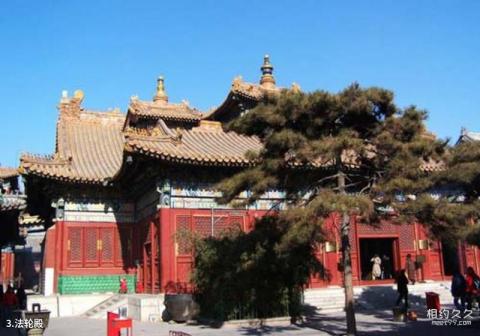
Introduction to the Falun Hall: The Falun Hall is the place where all the lamas in the temple gather to chant sutras. The hall is tall, in the shape of a cross, with a large mountain top. Five gold-plated pagodas are built on the top of the hall imitating the Tibetan style. It has strong Tibetan architectural features. It is the crystallization of Chinese and Tibetan culture and art. In the center of the hall is a 6.10-meter-high bronze statue of Master Tsongkhapa. Behind the statue is one of the "Three Wonders of the Lama Temple" - the Five Hundred Arhats Mountain carved from sandalwood. On the wooden frame in the west of the hall is the " There are 108 volumes of the Tripitaka, and 207 volumes of the Tripitaka are on the wooden shelf in the east of the hall. Two Tibetan Buddhist scriptures are displayed in a small glass compartment in the hall, which are the Medicine Sutra and the Dabai Huagai Yi copied by Emperor Qianlong. "Trait Sutra". There are detailed murals on the east and west walls of the hall, describing the missionary history of Sakyamuni.
On the left side of the Falun Hall is the Pavilion-style Panchen Tower (also known as the Medicine Master Altar). It was named after the Panchen Lama came to Beijing in 1780 to celebrate the birthday of Emperor Qianlong and gave sermons here.
On the right side of the Falun Hall is the Jietai Tower. There is a screen and a throne on the platform. Emperor Qianlong often wore court clothes, a big red khata, and a Buddhist crown. He sat on the throne, meditated, meditated, and preached scriptures. Now the Yonghegong Cultural Relics Exhibition Room has been opened in the Jietai Building, displaying more than 40 pieces of Qing Dynasty religious art and imperial supplies of Emperor Qianlong, as well as the colorful satin embroidered clothes and facial makeup of the Lama Lama when he danced "Buza" (commonly known as fighting ghosts). and dance scenes.
